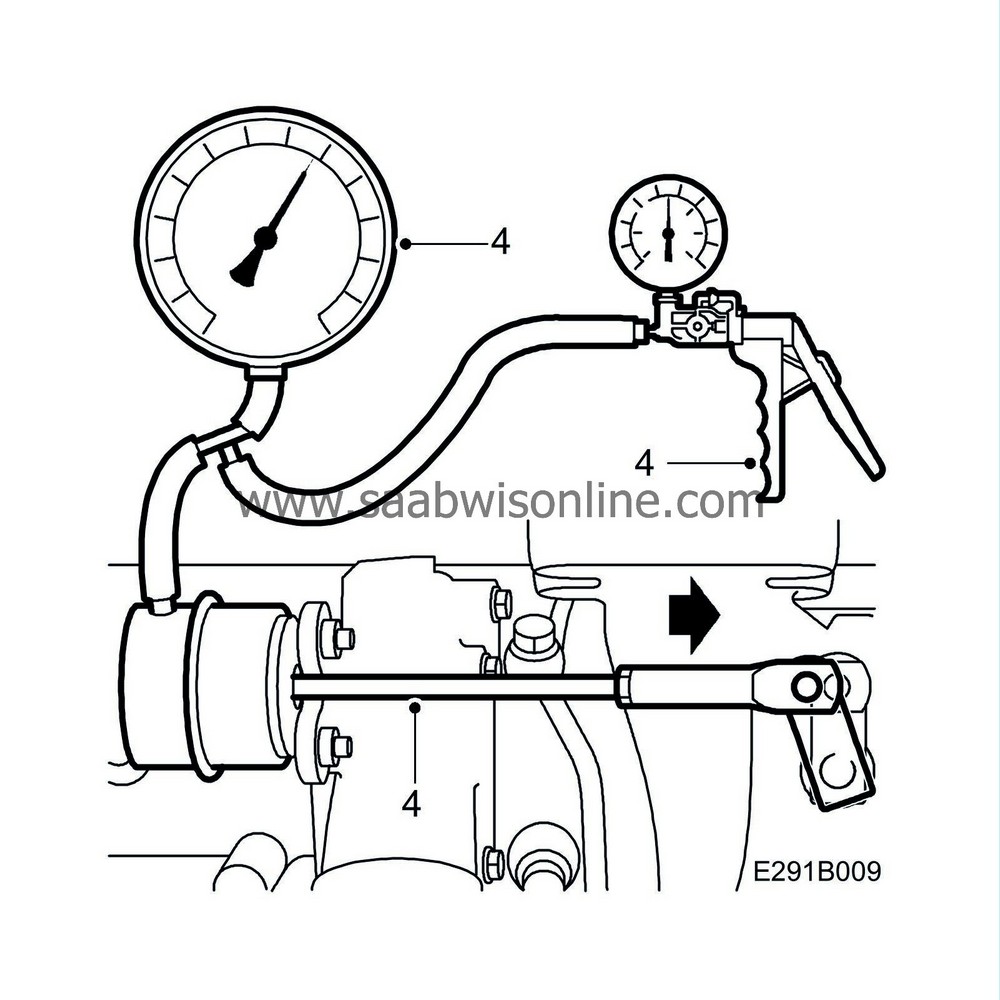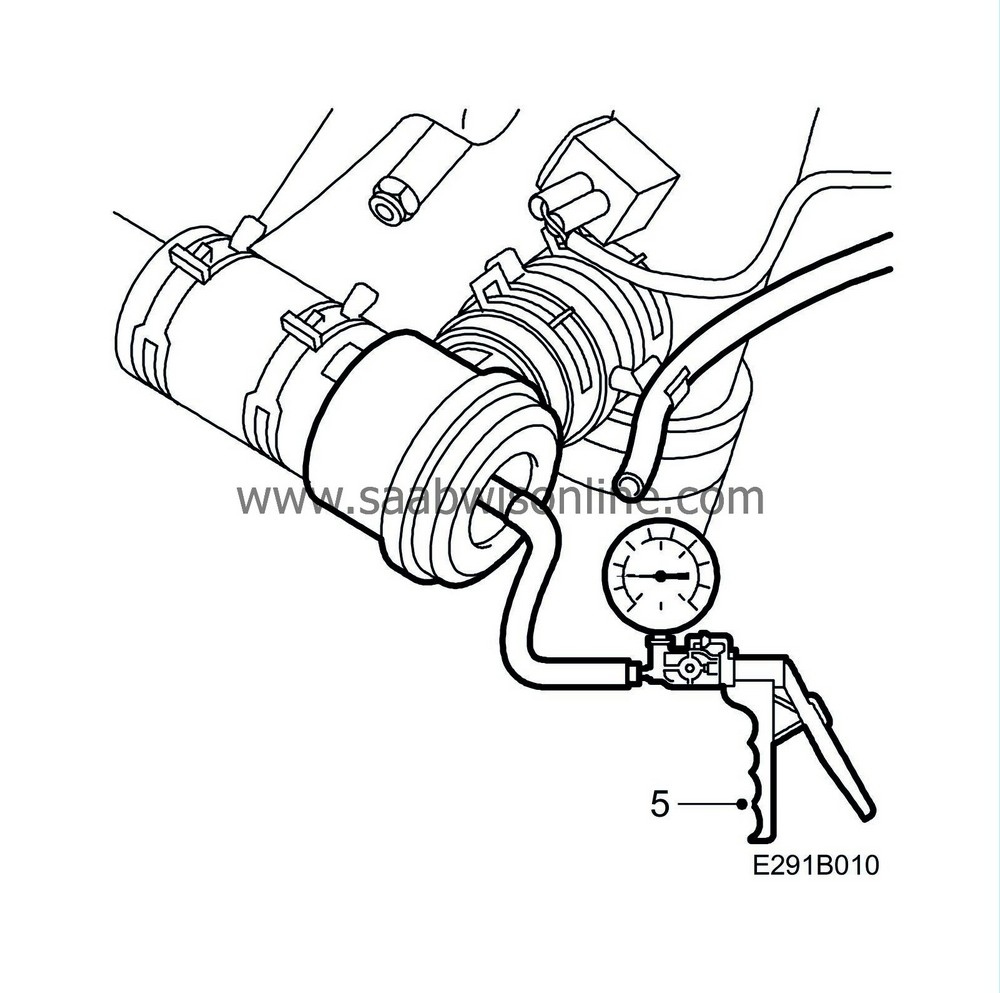(291-2494) Reduced performance and diagnostic trouble codes for the turbo control valve
Symptom: Low boost pressure, reduced performance
| TECHNICAL SERVICE BULLETIN | |
| Bulletin Nbr: | 291-2494 |
| Date: ........... | November 2004 |
| Market: | all |
| Reduced performance and diagnostic trouble codes for the turbo control valve |
| Cars affected |
Saab 9-5 M98-
Saab 9-3 (9400) M98-03
Saab 9-3 (9440) M03-
| Background |
Analyses of returned turbochargers have revealed that the source if the fault is often in other components rather than the turbo itself. Normally faults are in the by-pass diaphragm, the wastegate unit or in the control function for the turbo. This can give rise to low boost pressure, reduced performance and diagnostic trouble codes being generated. To avoid the turbo being replaced unnecessarily a more thorough analysis needs to be performed, in accordance with the following.
Symptom description
Low boost pressure, reduced performance| Procedure |
Before a possible turbo replacement, the system must be checked in accordance with the following checklist. This list must be enclosed with the turbo in the event of any claim.
To perform the test measurements, Tech2, 30 14 883 Pressure/vacuum pump and 83 93 514 Boost pressure gauge are required.
| 1. |
Enter the following information:
|
|||||||||||||||
| 2. |
Connect Tech2 and answer the following questions:
|
|||||||
| 3. |
Copy the following information from "System Information" in Tech2
Are the following steps completed?
|
|||||||||||||||||||||
| 6. |
Pressure test the charge air cooler with hoses in accordance with WIS - Car type - Engine - Turbocharger system - Adjustment/Replacement - Test pressurisation of the charge air cooler and pressure pipes, 4-cyl. (or equivalent for diesel engines).
|
|
| 7. |
Engines with vacuum pump:
Connect the boost pressure gauge to the vacuum circuit, start the engine and check that a vacuum of at least 0.7 bar is formed. If the vacuum is not achieved, check the hoses and the pump separately.
If there is no fault: check engine compression. |
|
| 8. |
Engines without vacuum pump:
Connect the boost pressure gauge to the vacuum circuit. Start the engine and make sure that a vacuum of at least 0.4 bar is formed. If the vacuum is not achieved, check the intake manifold and the vacuum connections.
If there is no fault: check engine compression. |
|
| 10. |
If no faults are detected in accordance with the above, replace the turbo in accordance with WIS - Car type - Engine - Turbocharger system - Adjustment/Replacement - Turbocharger. (or equivalent for diesel engines). Enclose this checklist with the exchanged turbo.
|
|
| Warranty/Time Information |
In the case of customer complaint and if the car is within the warranty period , use the following information to fill out the claim:
Failed Object: 29112
Fault/Reason code: 08
Location code: 09 (US=9)
Warranty Type (US): 01
Repair/Action code: 08
Labour Operation (US): 9-3 (9400) = 2911209, 9-3 (9440) =2911208, 9-5 = 2911209
Labour Operation (CA): J5891
Time: 0.3 hr.
Reported times do not include the following labour operations: Replacement of wastegate unit, replacement of by-pass valve or diaphragm, pressure testing the charge air cooler, checking compression and replacement of the turbo.





